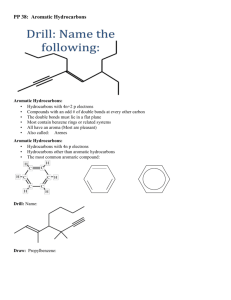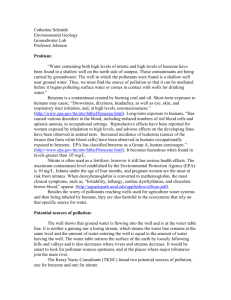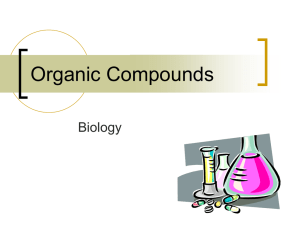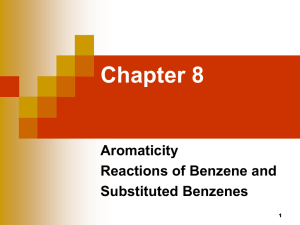final1-report
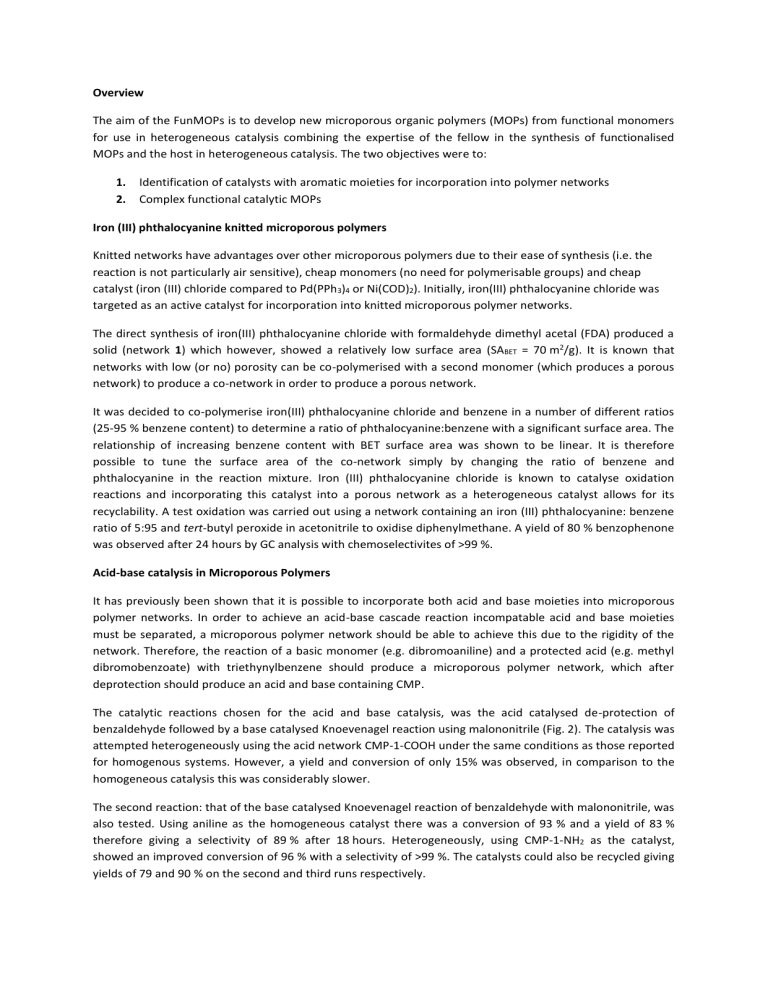
Overview
The aim of the FunMOPs is to develop new microporous organic polymers (MOPs) from functional monomers for use in heterogeneous catalysis combining the expertise of the fellow in the synthesis of functionalised
MOPs and the host in heterogeneous catalysis. The two objectives were to:
1.
Identification of catalysts with aromatic moieties for incorporation into polymer networks
2.
Complex functional catalytic MOPs
Iron (III) phthalocyanine knitted microporous polymers
Knitted networks have advantages over other microporous polymers due to their ease of synthesis (i.e. the reaction is not particularly air sensitive), cheap monomers (no need for polymerisable groups) and cheap catalyst (iron (III) chloride compared to Pd(PPh
3
)
4
or Ni(COD)
2
). Initially, iron(III) phthalocyanine chloride was targeted as an active catalyst for incorporation into knitted microporous polymer networks.
The direct synthesis of iron(III) phthalocyanine chloride with formaldehyde dimethyl acetal (FDA) produced a solid (network 1) which however, showed a relatively low surface area (SA
BET
= 70 m 2 /g). It is known that networks with low (or no) porosity can be co-polymerised with a second monomer (which produces a porous network) to produce a co-network in order to produce a porous network.
It was decided to co-polymerise iron(III) phthalocyanine chloride and benzene in a number of different ratios
(25-95 % benzene content) to determine a ratio of phthalocyanine:benzene with a significant surface area. The relationship of increasing benzene content with BET surface area was shown to be linear. It is therefore possible to tune the surface area of the co-network simply by changing the ratio of benzene and phthalocyanine in the reaction mixture. Iron (III) phthalocyanine chloride is known to catalyse oxidation reactions and incorporating this catalyst into a porous network as a heterogeneous catalyst allows for its recyclability. A test oxidation was carried out using a network containing an iron (III) phthalocyanine: benzene ratio of 5:95 and tert-butyl peroxide in acetonitrile to oxidise diphenylmethane. A yield of 80 % benzophenone was observed after 24 hours by GC analysis with chemoselectivites of >99 %.
Acid-base catalysis in Microporous Polymers
It has previously been shown that it is possible to incorporate both acid and base moieties into microporous polymer networks. In order to achieve an acid-base cascade reaction incompatable acid and base moieties must be separated, a microporous polymer network should be able to achieve this due to the rigidity of the network. Therefore, the reaction of a basic monomer (e.g. dibromoaniline) and a protected acid (e.g. methyl dibromobenzoate) with triethynylbenzene should produce a microporous polymer network, which after deprotection should produce an acid and base containing CMP.
The catalytic reactions chosen for the acid and base catalysis, was the acid catalysed de-protection of benzaldehyde followed by a base catalysed Knoevenagel reaction using malononitrile (Fig. 2). The catalysis was attempted heterogeneously using the acid network CMP-1-COOH under the same conditions as those reported for homogenous systems. However, a yield and conversion of only 15% was observed, in comparison to the homogeneous catalysis this was considerably slower.
The second reaction: that of the base catalysed Knoevenagel reaction of benzaldehyde with malononitrile, was also tested. Using aniline as the homogeneous catalyst there was a conversion of 93 % and a yield of 83 % therefore giving a selectivity of 89 % after 18 hours. Heterogeneously, using CMP-1-NH
2
as the catalyst, showed an improved conversion of 96 % with a selectivity of >99 %. The catalysts could also be recycled giving yields of 79 and 90 % on the second and third runs respectively.
Cheaper microporous organic polymers (MOPs) are interesting for their use in the heterogeneous base catalysed Knoevenagel reaction. A “Knitted” network containing an aniline monomer was shown to have a surface area of 708 m 2 /g and was used as the heterogeneous catalyst. The yield and conversion of benzaldehyde was 79 % compared to 12 % for the blank reaction under the same conditions.
Thioxanthone containing Microporous Polymers
The molecule thioxanthone is known to be a Type II photoinitiator. Due to its rigid aromatic structure it was thought that it may be possible to build this moiety into a microporous polymer network. Two routes to a MOP were decided upon, firstly a CMP network using a dibrominated thioxantone monomer and secondly, the direct Friedel-Crafts type polymerisation using dimethoxy methane as a cross-linker. It was possible to design a strategy to yield a porous network by the co-polymerisation of thioxanthone with another high yielding porous monomer. The palladium catalysed Sonogashira reaction was used to create a CMP network from dibromothioxanthone. The surface area of this network was calculated to be 497 m 2 /g. Direct crosslinking of thioxanthone itself, yielded only a small amount of solid product which was non-porous. However, due to a solid product being formed from the Friedel-Crafts alkylation, it was possible to design a strategy to yield a porous network by the co-polymerisation of thioxanthone with another high yielding porous monomer.
In collaboration with the Istanbul Technical University the networks were used a macrophotoinitiators for the free radical polymerisation of methyl methacrylate (MMA). Using both visible and sunlight, it was possible to initiate the polymerisation of MMA using the thioxanthone networks. It was also shown that the networks could be recycled without any appreciable loss of activity.
Conculsions
Co-polymerisation of phthalocyanine with hydrophilic and hydrophobic monomers to yield high surface area networks. Such networks have been successful in the catalytic oxidation of diphenylmethane to benzophone
The synthesis of acid and base containing networks is possible
The base containing CMP-1-NH
2
could successfully catalyse the Knoevenagel reaction of benzaldehyde with malononitrile with good yields, conversions and selectivity.
Cheaper “knitted” networks can be used for the base catalysed Knoevenagel reaction with potential for selective reactions.
Thioxanthone networks can be synthesised, by using benzene and triphenylmethane as co-monomers
The networks are successful in the photopolymerisation of MMA




